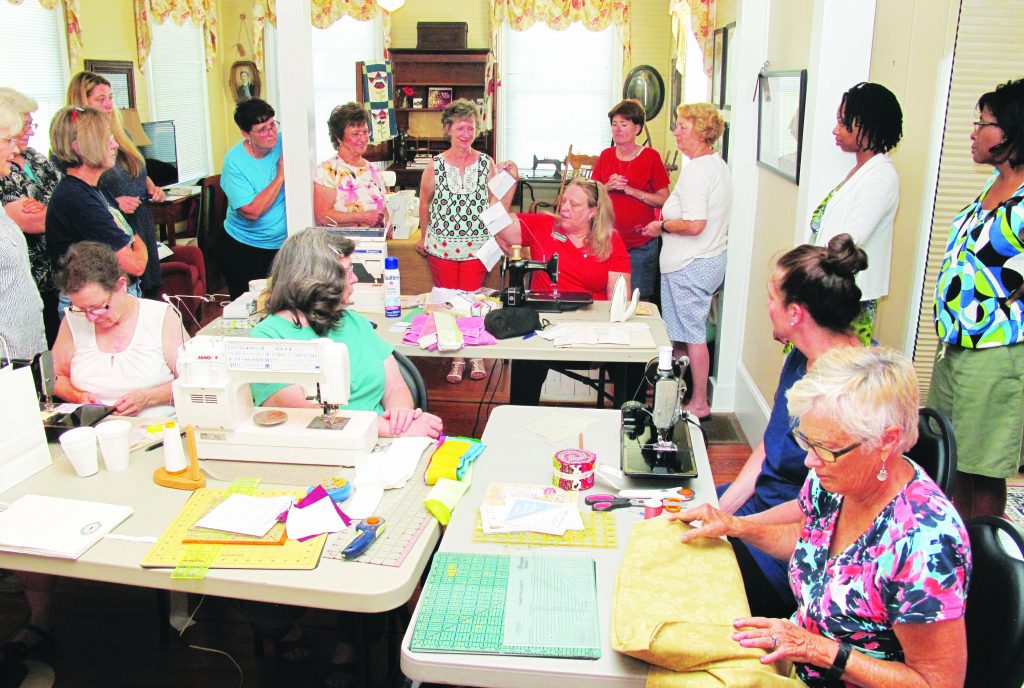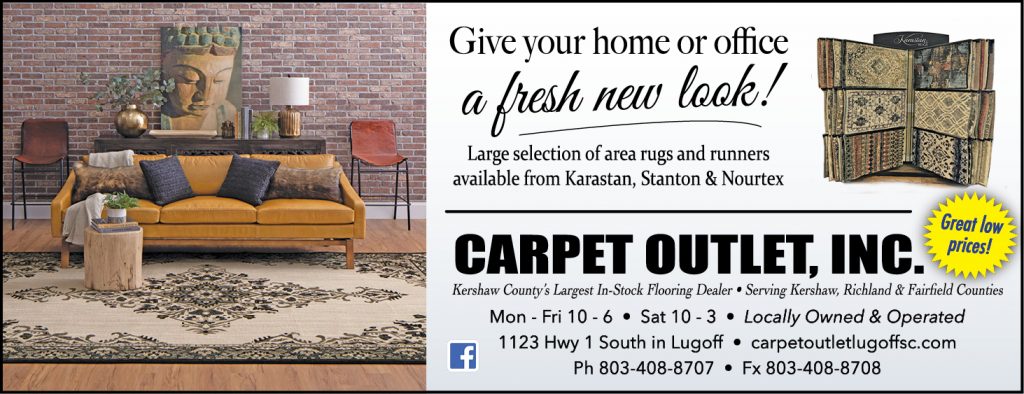When people come together with a collective intention, it’s a powerful thing. Magic happens.
And it’s happening at the Blythewood Historical Society and Museum where folks in the community are learning the history, techniques and art of quilt making. They are learning not only through films and lectures made possible through grants from the Nord Family Foundation and the Richland County Conservation Commission, but they are learning from hands-on instruction, how to make quilts, the art of our grandmothers.
On a recent Thursday, magic happened when a quilt gathering at the Langford Nord house brought together residents from Blythewood and Fairfield County to learn to quilt or to pursue and share their passion of quilting as a hobby. It was the first of three such quilt gatherings or classes that will be offered this summer.
At the first of the classes, beginner, intermediate and experienced levels of quilters begin their quilts. Each participant brought her own portable sewing machine. Quilter Donna Royson was the instructor.
Using a pattern called Whirligig from the company Quilt In A Day where Royson is a certified quilting instructor, the quilters used basic sewing machine quilting skills and consistent-sized strips of fabric to complete a whimsical yet traditional pinwheel square.
During the three-hour class, participants learned the techniques necessary to make the square and most completed as many as four squares during the session. The final product, a lap-size quilt, will need 40 of the squares which each quilter will finish at home. Once the squares are constructed, pressed and trimmed, participants will sew the squares together into rows and then sew the rows together to make the quilt top.
Although there were the various levels of expertise in the group, participants enjoyed a commaraderie and showed a willingness to assist each other. Friendships were formed and skills were enhanced.
Blythewood quilter Duane Walker will instruct the second class on Thursday, July 20 using a technique called paper piecing in which pieces of fabric are sewn to lines on paper to form unique patterns of squares. Later, the paper is removed and the squares are sewn together to form a quilt top. The beauty of this technique is that it provides accuracy of the final product by ensuring that all geometric shapes are exact and, in the end, are consistent and form a specific pattern.
The third and final class will be taught by Stephanie Alexander on Thursday, Aug. 3. During this class, quilters will sew various size strips of fabric to a foundation fabric to create a scrappy quilt top. This method has been used for centuries and is made from scraps of fabric left over from various other quilting and sewing projects. In other words, as mom made the family’s clothes, she saved the leftover scraps and sewed them together into a quilt.
While there is not sufficient time in a three-hour class to finish a quilt, the goal is to learn the technique and retain the instruction by constructing several blocks during the class period.
“I am excited and encouraged at the amount of talent and intrest in the quilting hobby in our area,” Royson said, “and it is my hope that we will have more classes on quilt construction and completion in the future.”
To drive interest in quilts and quilting, The Langford-Nord house has hosted video parties, “show and tell” times, quilting lectures and lesson as well as a Quilt Show during the last year. Over 60 local quilts have been photographed and documented for the Society’s Quilt Index.
“Making a quilt is fun and gratifying. We admire them, gift them, hang them, photograh them, treasure them and warm ourselves with them,” Royson said.
Beyond all this, why are quilts and their history important?
The study of quilts reveals the diversity of the makers. Quilting is a multi-cultural art unbound by race, class or ethnicity. Facts about the maker, quilt design, fabric and sewing techniques were used to revise history as they told stories from a woman’s perspective not previously documented.
In the United States, quilting became popular during the Colonial Era (late 19th century to the 1920s) as Americans were moving away from European influence. Many quilts were made to commemorate the Centennial (1876). However, most were made of necessity and used to keep a family warm. Although initially made for utilitarian purposes, they were no less artfully constructed. The makers’ ingenuity, originality, frugality and artistry is evident from studying of quilts of this era.
In the 1970s the Whitney Museum in NYC held a quilt exhibit which enjoyed a large attendance and wide media coverage. The display honored the inherent worth of quilts as “art objects with considerable visual eloquence.” The quilts strongly resembled abstract paintings through manipulation of geometric patterns, optical effects with color and form on a large scale.
Janet Catherine Berlo, Professor of Art History at the University of Rochester, wrote, “Quilts are one of our country’s most important artifacts. By studying quilts, we study the social like of things – we deepen our understanding of how we shape our culture through objects, and shape our understanding of objects through the various ways we interpret and value them at different points in history.”
Next time you encounter a quilt, study it and let it speak to you about its artistry, its history and its maker. Be reverent and honored that you are looking at a vital part of history.
To register for the second of the Historical Society’s summer quilt gatherings, email [email protected] or call 786-5200.
A QUILT is a multi-layered textile, traditionally composed of three layers of fiber: a woven cloth top, a layer of batting, and a woven back, combined using the technique of quilting, the process of sewing the three layers together. (Wikipedia)
















